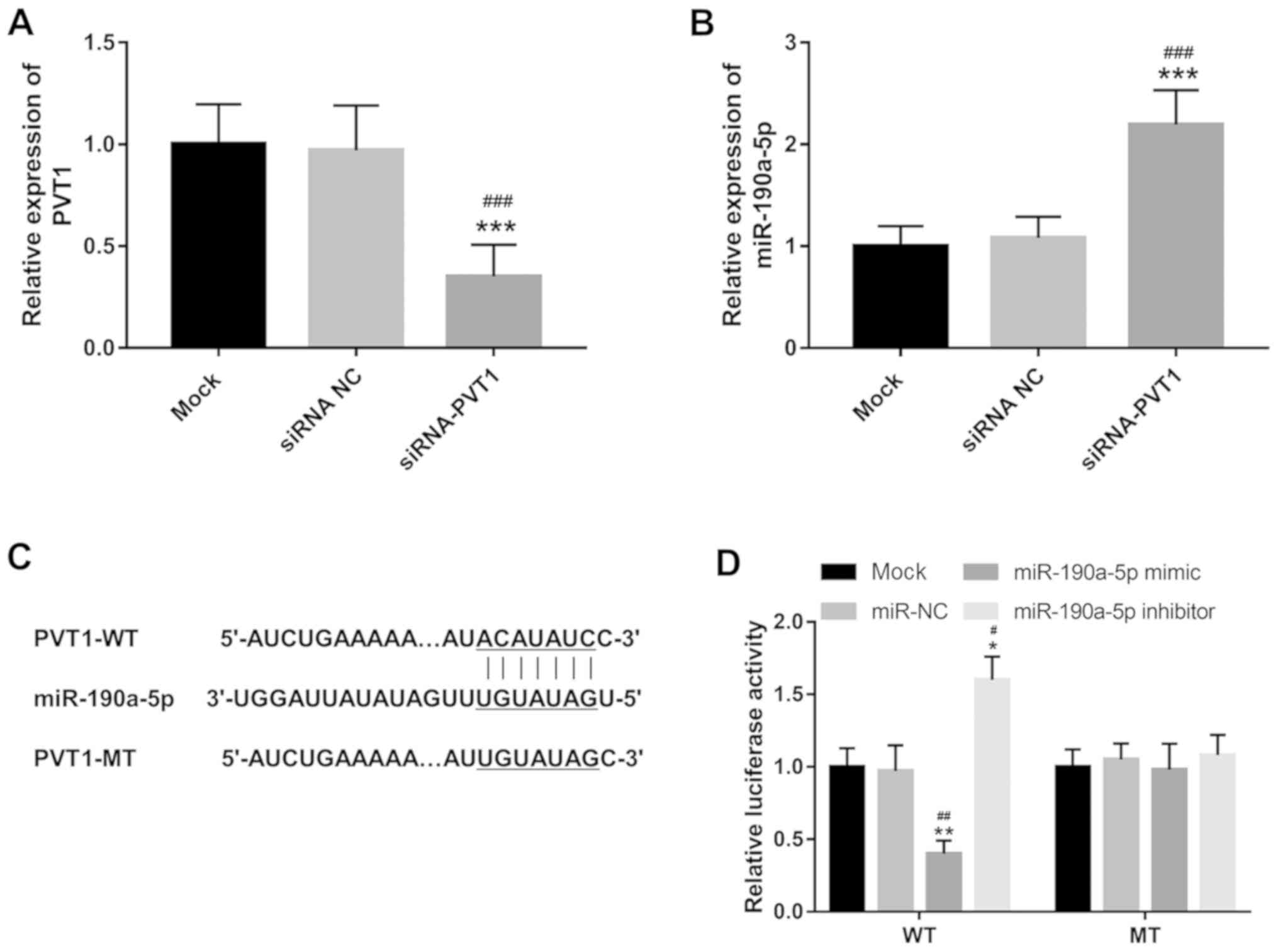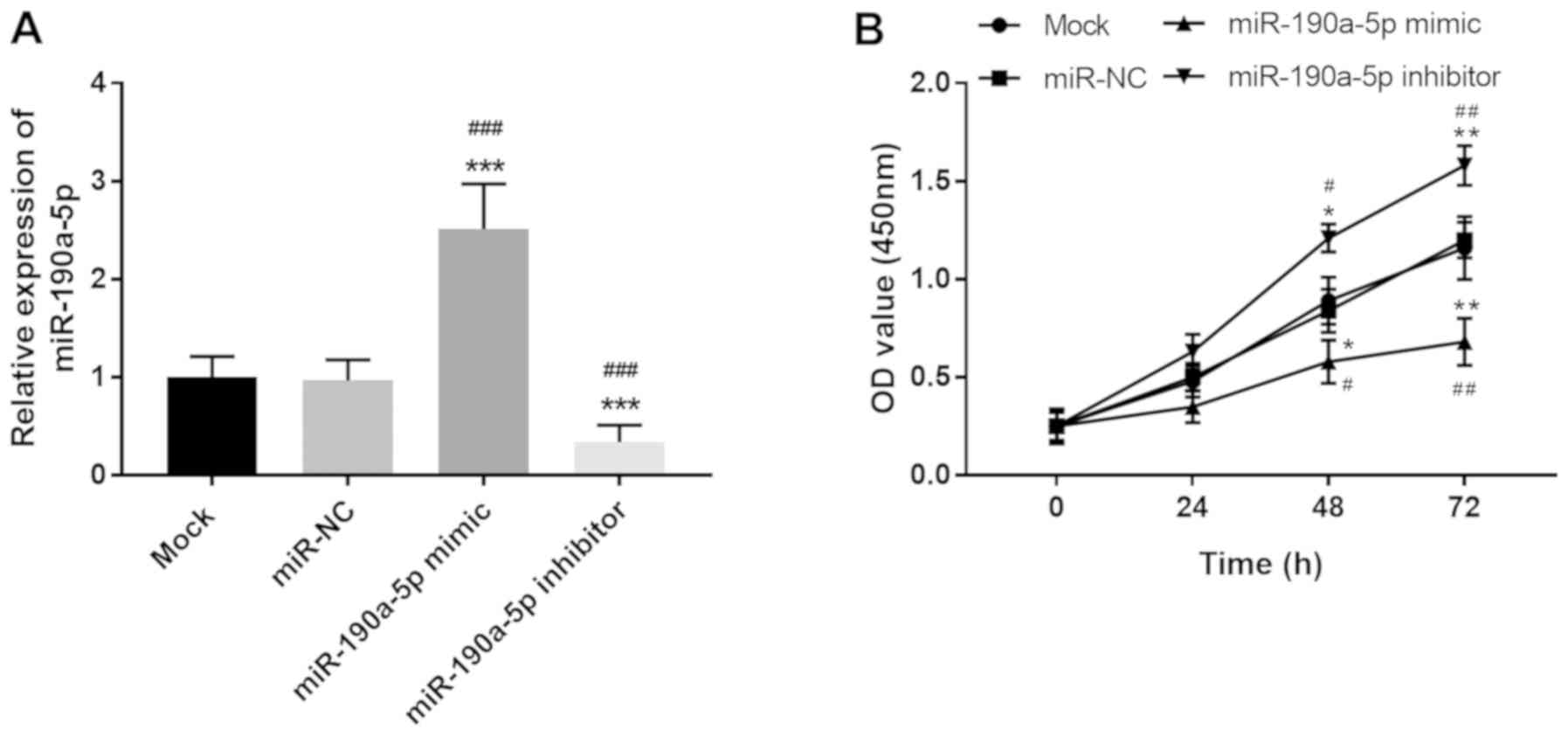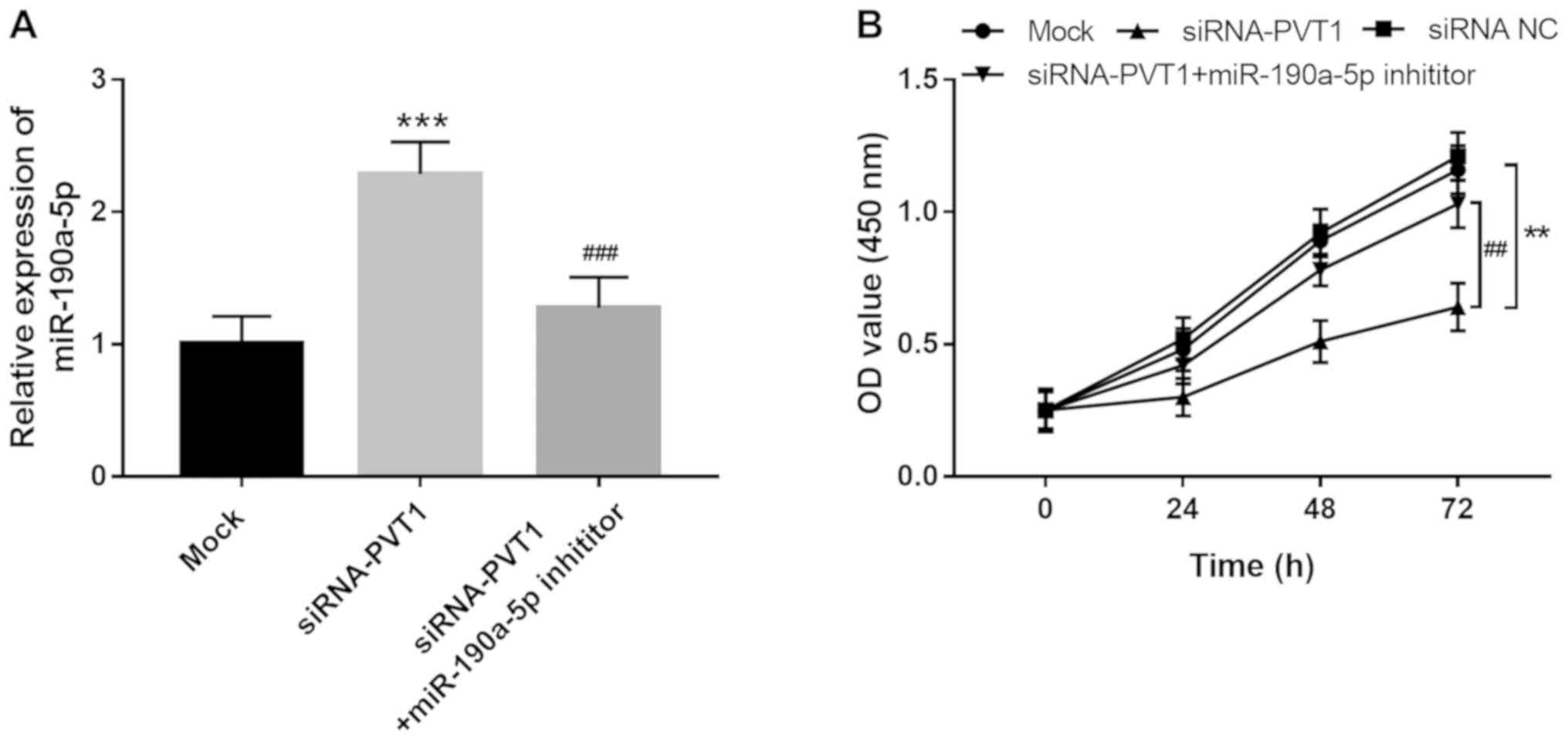|
1
|
Tanai E and Frantz S: Pathophysiology of
heart failure. Compr Physiol. 6:187–214. 2015.PubMed/NCBI View Article : Google Scholar
|
|
2
|
Hoffman TM: Chronic heart failure. Pediatr
Crit Care Med. 17 (8 Suppl 1):S119–S123. 2016.
|
|
3
|
Ford I, Robertson M, Komajda M, Böhm M,
Borer JS, Tavazzi L and Swedberg K: SHIFT Investigators: Top ten
risk factors for morbidity and mortality in patients with chronic
systolic heart failure and elevated heart rate: The SHIFT Risk
Model. Int J Cardiol. 184:163–169. 2015.PubMed/NCBI View Article : Google Scholar
|
|
4
|
Maggioni AP: Epidemiology of heart failure
in Europe. Heart Fail Clin. 11:625–635. 2015.PubMed/NCBI View Article : Google Scholar
|
|
5
|
Heil B and Tang WH: Biomarkers: Their
potential in the diagnosis and treatment of heart failure. Cleve
Clin J Med. 82 (12 Suppl 2):S28–S35. 2015.PubMed/NCBI View Article : Google Scholar
|
|
6
|
Schaub JA, Coca SG, Moledina DG, Gentry M,
Testani JM and Parikh CR: Amino-Terminal Pro-B-type natriuretic
peptide for diagnosis and prognosis in patients with renal
dysfunction: A systematic review and meta-analysis. JACC Heart
Fail. 3:977–989. 2015.PubMed/NCBI View Article : Google Scholar
|
|
7
|
He X, Ji J, Wang T, Wang MB and Chen XL:
Upregulation of Circulating miR-195-3p in Heart Failure.
Cardiology. 138:107–114. 2017.PubMed/NCBI View Article : Google Scholar
|
|
8
|
Eelen G, de Zeeuw P, Treps L, Harjes U,
Wong BW and Carmeliet P: Endothelial cell metabolism. Physiol Rev.
98:3–58. 2018.PubMed/NCBI View Article : Google Scholar
|
|
9
|
Sieve I, Munster-Kuhnel AK and
Hilfiker-Kleiner D: Regulation and function of endothelial
glycocalyx layer in vascular diseases. Vascul Pharmacol. 100:26–33.
2018.PubMed/NCBI View Article : Google Scholar
|
|
10
|
Sager HB, Hulsmans M, Lavine KJ, Moreira
MB, Heidt T, Courties G, Sun Y, Iwamoto Y, Tricot B, Khan OF, et
al: Proliferation and recruitment contribute to myocardial
macrophage expansion in chronic heart failure. Circ Res.
119:853–864. 2016.PubMed/NCBI View Article : Google Scholar
|
|
11
|
Uchida S and Dimmeler S: Long noncoding
RNAs in cardiovascular diseases. Circ Res. 116:737–750.
2015.PubMed/NCBI View Article : Google Scholar
|
|
12
|
Kong Q and Qiu M: Long noncoding RNA
SNHG15 promotes human breast cancer proliferation, migration and
invasion by sponging miR-211-3p. Biochem Biophys Res Commun.
495:1594–1600. 2018.PubMed/NCBI View Article : Google Scholar
|
|
13
|
Dangwal S, Schimmel K, Foinquinos A, Xiao
K and Thum T: Noncoding RNAs in heart failure. Handb Exp Pharmacol.
243:423–445. 2017.PubMed/NCBI View Article : Google Scholar
|
|
14
|
Kumarswamy R, Bauters C, Volkmann I, Maury
F, Fetisch J, Holzmann A, Lemesle G, de Groote P, Pinet F and Thum
T: Circulating long noncoding RNA, LIPCAR, predicts survival in
patients with heart failure. Circ Res. 114:1569–1575.
2014.PubMed/NCBI View Article : Google Scholar
|
|
15
|
Yu YH, Hu ZY, Li MH, Li B, Wang ZM and
Chen SL: Cardiac hypertrophy is positively regulated by long
non-coding RNA PVT1. Int J Clin Exp Pathol. 8:2582–2589.
2015.PubMed/NCBI
|
|
16
|
Cao F, Li Z, Ding WM, Yan L and Zhao QY:
LncRNA PVT1 regulates atrial fibrosis via
miR-128-3p-SP1-TGF-β1-Smad axis in atrial fibrillation. Mol Med.
25(7)2019.PubMed/NCBI View Article : Google Scholar
|
|
17
|
Zheng J, Hu L, Cheng J, Xu J, Zhong Z,
Yang Y and Yuan Z: lncRNA PVT1 promotes the angiogenesis of
vascular endothelial cell by targeting miR26b to activate
CTGF/ANGPT2. Int J Mol Med. 42:489–496. 2018.PubMed/NCBI View Article : Google Scholar
|
|
18
|
Qiu Z, Li H, Wang J and Sun C: MiR-146a
and miR-146b in the diagnosis and prognosis of papillary thyroid
carcinoma. Oncol Rep. 38:2735–2740. 2017.PubMed/NCBI View Article : Google Scholar
|
|
19
|
Zhao Y, Ponnusamy M, Zhang L, Zhang Y, Liu
C, Yu W, Wang K and Li P: The role of miR-214 in cardiovascular
diseases. Eur J Pharmacol. 816:138–145. 2017.PubMed/NCBI View Article : Google Scholar
|
|
20
|
Liu B, Li J and Cairns MJ: Identifying
miRNAs, targets and functions. Brief Bioinform. 15:1–19.
2014.PubMed/NCBI View Article : Google Scholar
|
|
21
|
Zhao L, Han T, Li Y, Sun J, Zhang S, Liu
Y, Shan B, Zheng D and Shi J: The lncRNA SNHG5/miR-32 axis
regulates gastric cancer cell proliferation and migration by
targeting KLF4. FASEB J. 31:893–903. 2017.PubMed/NCBI View Article : Google Scholar
|
|
22
|
Xue W, Chen J, Liu X, Gong W, Zheng J, Guo
X, Liu Y, Liu L, Ma J, Wang P, et al: PVT1 regulates the malignant
behaviors of human glioma cells by targeting miR-190a-5p and
miR-488-3p. Biochim Biophys Acta Mol Basis Dis. 1864:1783–1794.
2018.PubMed/NCBI View Article : Google Scholar
|
|
23
|
Wong LL, Armugam A, Sepramaniam S,
Karolina DS, Lim KY, Lim JY, Chong JP, Ng JY, Chen YT, Chan MM, et
al: Circulating microRNAs in heart failure with reduced and
preserved left ventricular ejection fraction. Eur J Heart Fail.
17:393–404. 2015.PubMed/NCBI View
Article : Google Scholar
|
|
24
|
WRITING COMMITTEE MEMBERS, Yancy CW,
Jessup M, Bozkurt B, Butler J, Casey DE Jr, Drazner MH, Fonarow GC,
Geraci SA, Horwich T, et al: 2013 ACCF/AHA guideline for the
management of heart failure: A report of the American College of
Cardiology Foundation/American Heart Association Task Force on
practice guidelines. Circulation 128: e240-e327, 2013.
|
|
25
|
Livak KJ and Schmittgen TD: Analysis of
relative gene expression data using real-time quantitative PCR and
the 2(-Delta Delta C(T)) method. Methods. 25:402–408.
2001.PubMed/NCBI View Article : Google Scholar
|
|
26
|
Aman J, Weijers EM, van Nieuw Amerongen
GP, Malik AB and van Hinsbergh VW: Using cultured endothelial cells
to study endothelial barrier dysfunction: Challenges and
opportunities. Am J Physiol Lung Cell Mol Physiol. 311:L453–L466.
2016.PubMed/NCBI View Article : Google Scholar
|
|
27
|
Jufri NF, Mohamedali A, Avolio A and Baker
MS: Mechanical stretch: Physiological and pathological implications
for human vascular endothelial cells. Vascular Cell.
7(8)2015.PubMed/NCBI View Article : Google Scholar
|
|
28
|
Koyama T, Sakurai T, Kamiyoshi A,
Ichikawa-Shindo Y, Kawate H and Shindo T: Adrenomedullin-RAMP2
system in vascular endothelial cells. J Atheroscler Thromb.
22:647–653. 2015.PubMed/NCBI View Article : Google Scholar
|
|
29
|
Franssen C, Chen S, Unger A, Korkmaz HI,
De Keulenaer GW, Tschöpe C, Leite-Moreira AF, Musters R, Niessen
HW, Linke WA, et al: Myocardial microvascular inflammatory
endothelial activation in heart failure with preserved ejection
fraction. JACC Heart Fail. 4:312–324. 2016.PubMed/NCBI View Article : Google Scholar
|
|
30
|
Zheng B, Yin WN, Suzuki T, Zhang XH, Zhang
Y, Song LL, Jin LS, Zhan H, Zhang H, Li JS and Wen JK:
Exosome-mediated miR-155 transfer from smooth muscle cells to
endothelial cells induces endothelial injury and promotes
atherosclerosis. Mol Ther. 25:1279–1294. 2017.PubMed/NCBI View Article : Google Scholar
|
|
31
|
Schober A, Nazari-Jahantigh M, Wei Y,
Bidzhekov K, Gremse F, Grommes J, Megens RT, Heyll K, Noels H,
Hristov M, et al: MicroRNA-126-5p promotes endothelial
proliferation and limits atherosclerosis by suppressing Dlk1. Nat
Med. 20:368–376. 2014.PubMed/NCBI View
Article : Google Scholar
|
|
32
|
Duan Q, Yang L, Gong W, Chaugai S, Wang F,
Chen C, Wang P, Zou MH and Wang DW: MicroRNA-214 Is upregulated in
heart failure patients and suppresses xbp1-mediated endothelial
cells angiogenesis. J Cell Physiol. 230:1964–1973. 2015.PubMed/NCBI View Article : Google Scholar
|
|
33
|
Hill SA, Booth RA, Santaguida PL,
Don-Wauchope A, Brown JA, Oremus M, Ali U, Bustamam A, Sohel N,
McKelvie R, et al: Use of BNP and NT-proBNP for the diagnosis of
heart failure in the emergency department: A systematic review of
the evidence. Heart Fail Rev. 19:421–438. 2014.PubMed/NCBI View Article : Google Scholar
|
|
34
|
Liu T, Zhang X, Gao S, Jing F, Yang Y, Du
L, Zheng G, Li P, Li C and Wang C: Exosomal long noncoding RNA
CRNDE-h as a novel serum-based biomarker for diagnosis and
prognosis of colorectal cancer. Oncotarget. 7:85551–85563.
2016.PubMed/NCBI View Article : Google Scholar
|
|
35
|
Gao L, Liu Y, Guo S, Yao R, Wu L, Xiao L,
Wang Z, Liu Y and Zhang Y: Circulating long noncoding RNA HOTAIR is
an essential mediator of acute myocardial infarction. Cell Physiol
Biochem. 44:1497–1508. 2017.PubMed/NCBI View Article : Google Scholar
|
|
36
|
Xuan L, Sun L, Zhang Y, Huang Y, Hou Y, Li
Q, Guo Y, Feng B, Cui L, Wang X, et al: Circulating long non-coding
RNAs NRON and MHRT as novel predictive biomarkers of heart failure.
J Cell Mol Med. 21:1803–1814. 2017.PubMed/NCBI View Article : Google Scholar
|



















